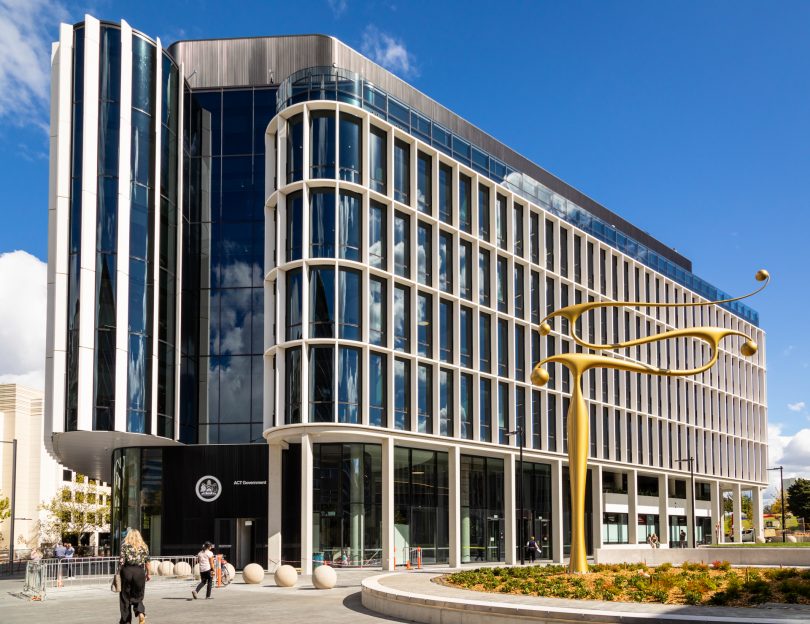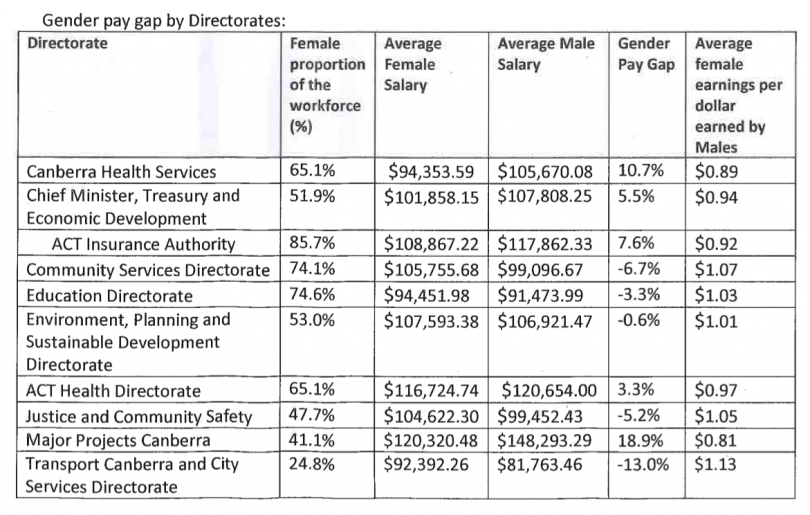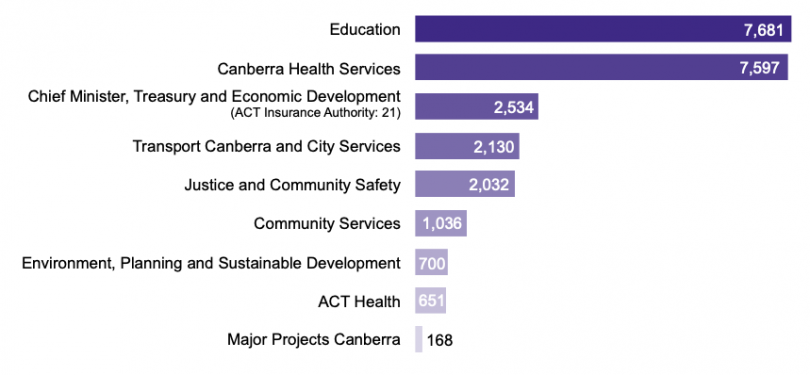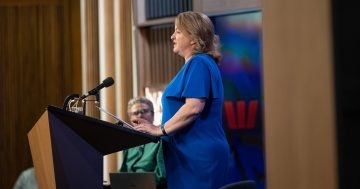
The gender pay gap across the ACT Public Service sits below one per cent. Photo: Michelle Kroll.
The gender pay gap in the ACT has been steadily decreasing over the last five years, but the government and public sector union have said there is still more to be done to reach equality.
The average discrepancy in the ACT public service is now below one per cent, down from 3.6 per cent in 2016.
The pay gap at the executive level of the ACTPS is even less, at 0.6 per cent, and more than 50 per cent of executive positions are held by women.
However, recent data from ACT Estimates questions on notice shows there are still departments where large discrepancies exist.
Major Projects Canberra has the largest gender pay discrepancy for an ACT Directorate, with female employees earning an average of $28,000 – or 19 per cent – less than their male colleagues.
The average pay for women in the Directorate is $120,320 compared to $148,293 for men, and women make up just over 40 per cent of the Directorate’s workforce.
Conversely, in the much larger Transport Canberra and City Services Directorate (TCCS), women are paid almost $10,000 more on average despite making up only a quarter of the Directorate’s workforce.
This equates to $1.13 for every $1 their male colleagues make.
Across the ACT, the pay difference between men and women is 8 per cent, and jumps to 14 per cent across Australia, according to the most recent State of the Service report released in December 2020.
Community and Public Sector Union Regional Secretary Maddy Northam said while the ACT Government outperforms the Commonwealth, there was still work to be done to ensure women are given the same opportunities for training and promotion as men across all departments.
There is also an urgent need for wage growth, Ms Northam said.
“Bargaining in the ACT Government kicked off this week [and] the Australian public service isn’t coming to the table with decent pay offers so we need the ACT Government to step up and help Canberra recover,” she said.
“That is why we are asking the ACT Government to go above and beyond what they offered last time and offer a 3.5 per cent per annum pay deal.”

The gender pay gap within the ACT Public Service, broken down by Directorate. Image: Supplied.
Minister for Women Yvette Berry said Canberrans have a lot to be proud of, but gender inequality still exists in the ACT.
“Despite significant improvements to the status of women, gender inequality persists,” she said.
Ms Berry said the ACT Women’s Plan 2016-2026 aims to remove barriers for women and girls to reach their potential and achieve gender equity.
“The Second Action Plan, Equity Together, under the ACT Women’s Plan, is progressing on track with one action complete and 27 actions underway one year on since its launch in March 2020,” she said.
“During the past 12 months, the government, together with the community, has shown an ongoing commitment to the delivery of all 29 actions under this plan to improve gender equity.”
The highest representation of female employees is at the ACT Insurance Authority (86 per cent), which sits within the Chief Minister’s Directorate, followed by the Education Directorate (75 per cent), Community Services Directorate (74 per cent) and ACT Health and Canberra Health Services, which both have 65 per cent.
Following TCCS, the Directorates with the lowest female representation are Major Projects Canberra (41 per cent) and Justice and Community Safety (48 per cent).
The workforce of the Chief Minister, Treasury and Economic Development Directorate and Environment, Planning and Sustainable Development Directorate both have just above 50 per cent female staff.
The entire ACTPS comprises almost 25,000 staff – 65 per cent being women – and has an average salary of just above $80,000.

A breakdown of the number of people employed within the ACT Public Service. Image: Supplied.





















